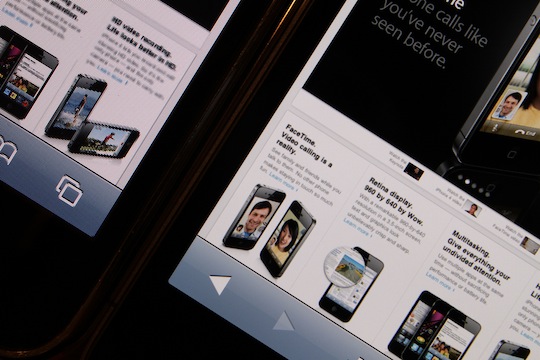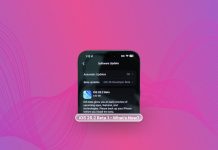
A feature that hasn’t been talked about in rumours or when showcasing supposedly leaked components of the upcoming iPad that will almost certainly be introduced tomorrow is a feature of the iPhone 4’s display: Optical lamination.
This refers to the process of binding the cover glass to the display itself by lamination, leaving no room between the panel and the glass. This technique has never been used before on a computer or mobile phone; Apple pioneered it.
In the video below you can see Bob Mansfield, Apple’s Senior Vice President of Hardware Engineering, talking about optical lamination, emphasising how much this process adds to the clarity and sharpness of the display (check the video from timecode 01:51).
In his initial review of the iPhone 4, John Gruber wrote about this feature:
As I wrote after examining Apple’s iPhone 4 demo units after the WWDC keynote, the Retina Display’s overall effect is like that of high-end glossy magazine print — except that it updates live. It’s living breathing print. I don’t recall ever having seen motion graphics of this resolution, anywhere. And (again as noted previously) it’s more than just the pixel resolution — it’s that the LCD is so much closer to the surface of the glass. Like pixels on glass rather than pixels under glass. This is the result of a new manufacturing process Apple has pioneered. No other company gives a shit about things like this.
Some people expected Apple to introduce this feature to the iPad in its second generation, which didn’t happen, because it seemed that the technology wasn’t ready for displays larger than the iPhone’s.
Personally I’d be surprised if Apple didn’t apply this particular feature to the next version of the iPad, which of course further questions the validity of reports of leaked displays from the upcoming device, as Apple supplies the display units for the iPhone 4 and 4S as a whole, not separate panels and front glass panes.
I would argue that with a Retina display, every fraction of a millimetre of distance between the display panel, and the cover glass and thus every tiny reflection will reduce the clarity of the fabled 2048 px * 1536 px resolution in the next iPad. Comparing the displays of the iPhone 3GS and the iPhone 4S side by side, especially when viewing text, shows just how much of an effect optical lamination has on the readability and overall display quality.
What do you think? Is the lamination necessary to make the next iPad’s display really shine, or will an ordinary display construction be sufficient? Tell us in the comments or on Twitter.
Photo Credit: Yutaka Tsutano






